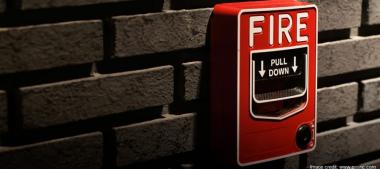
Fire alarm systems are installed to save people, property, and assets from any unforeseen fire accident. But mere installation of a fire alarm system is not enough to prevent hazardous accidents and ensure safety. Just like any other machinery or electrical equipment, we can’t be sure whether they are fully functional or not. Therefore, the fire alarm systems and smoke detectors need to be tested at a regular interval. Dust, dirt and other environmental contaminants can hinder their components and mechanism. A periodic test and maintenance will ensure the optimal functioning of these fire alarm systems and the detectors.
Below are few important tips that will help in testing and maintaining a fire alarm system:
- Manual inspection of the alarm indicator should be performed to check all the connecting wires are in place and batteries are in good condition.
- If the batteries have corroded, immediately replace them with the new ones to ensure effective functioning.
- Follow the manufacturer’s specification to test the alarm sensors and smoke detectors as it will help ensure each part and component is working as per defined standards. It will also help find out any technical fault and the ways to fix it.
- The test and maintenance steps for fire alarm system largely depend upon the age of the system. The fire systems that are five or less than five years old require little maintenance. While the ones that are five to ten years old will require extensive inspection, testing and maintenance efforts. These old systems will require close attention to each part to ensure all the components are functioning well.
Perform a fire drill
This is a must-follow step to ensure all the parts of fire alarm system are intact and functioning optimally. A mock fire drill should be performed at least once a month or every 15 days at home, workplace, schools or any other organizations where the fire alarm is installed. It not only ensures the working condition of the entire fire alarm system but it also helps people get prepared to act wisely and responsibly at the time of any accident. It also proves how efficient your disaster management plan will really work in all practical senses.
